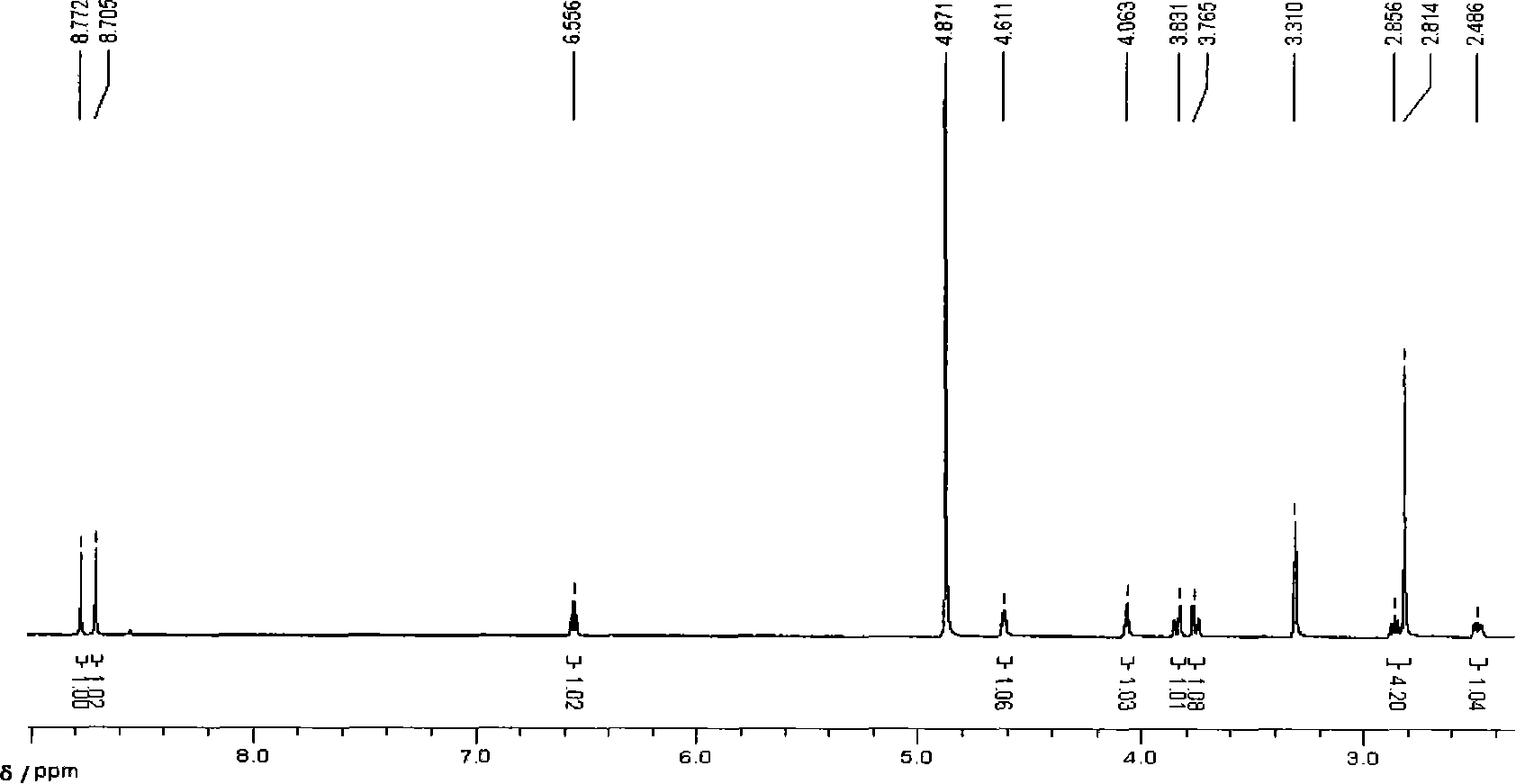Process of synthesizing 6-methylpurine-2'-deoxyncleoside with gene engineering bacterium
A technology of genetically engineered bacteria and methyl purine, applied in the field of biopharmaceuticals, can solve the problems of difficult separation, a large number of isomers, chemical catalyst personnel and environmental poisoning, and achieve the effects of cost saving, short cycle and low cost
- Summary
- Abstract
- Description
- Claims
- Application Information
AI Technical Summary
Problems solved by technology
Method used
Image
Examples
Embodiment Construction
[0034] 1. Construction of genetically engineered bacteria.
[0035] Primers were designed according to the PNP and TP gene sequences of E.coli provided in GeneBank as follows:
[0036] PNP
[0037] 5' primer: 5'cat gccatgg ctaccccacacattaa-3' (Ncol)
[0038] 3' primer: 5'-at gtcgac ttactctttatcgcccagcag-3 (Sal I)
[0039] TP
[0040] 5' Primer: 5'-tttt gtcgac catgtttctcgcacaa-3'(SaI)
[0041] 3' Primer: 5'-aaaa ctgcag ttattcgctgatacgg-3' (PstI)
[0042] PCR was performed using the chromosomal DNA of E.coli DH5α as a template: 95°C for 5 min, 30× (95°C for 40 s, 62°C for 40 s, 72°C for 1 min), 72°C for 10 min. The PCR product and the pBV220 vector were digested with restriction enzymes and ligated with T4DNA ligase to transform E.coli DH5α competent cells. The pBV220 vector general primer PCR and restriction enzyme digestion were used to identify the transformants to obtain the genetically engineered bacteria pBV220-PNP and pBV220-TP. DNA sequencing found that th...
PUM
 Login to View More
Login to View More Abstract
Description
Claims
Application Information
 Login to View More
Login to View More - R&D
- Intellectual Property
- Life Sciences
- Materials
- Tech Scout
- Unparalleled Data Quality
- Higher Quality Content
- 60% Fewer Hallucinations
Browse by: Latest US Patents, China's latest patents, Technical Efficacy Thesaurus, Application Domain, Technology Topic, Popular Technical Reports.
© 2025 PatSnap. All rights reserved.Legal|Privacy policy|Modern Slavery Act Transparency Statement|Sitemap|About US| Contact US: help@patsnap.com



